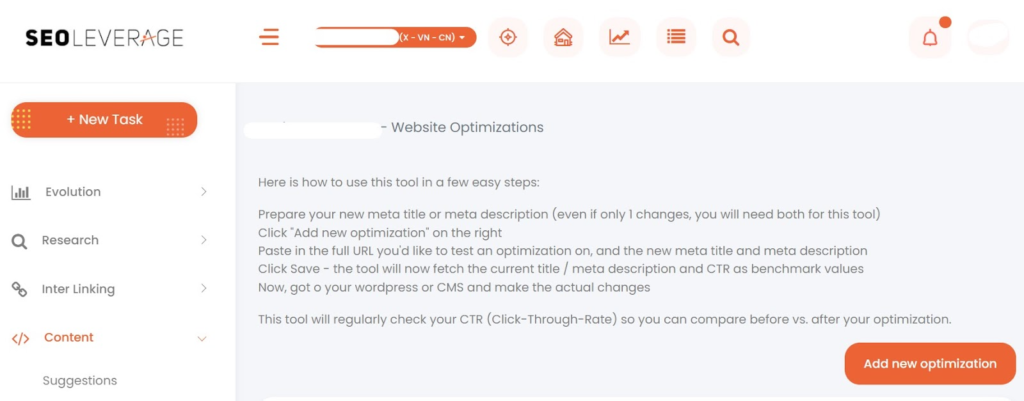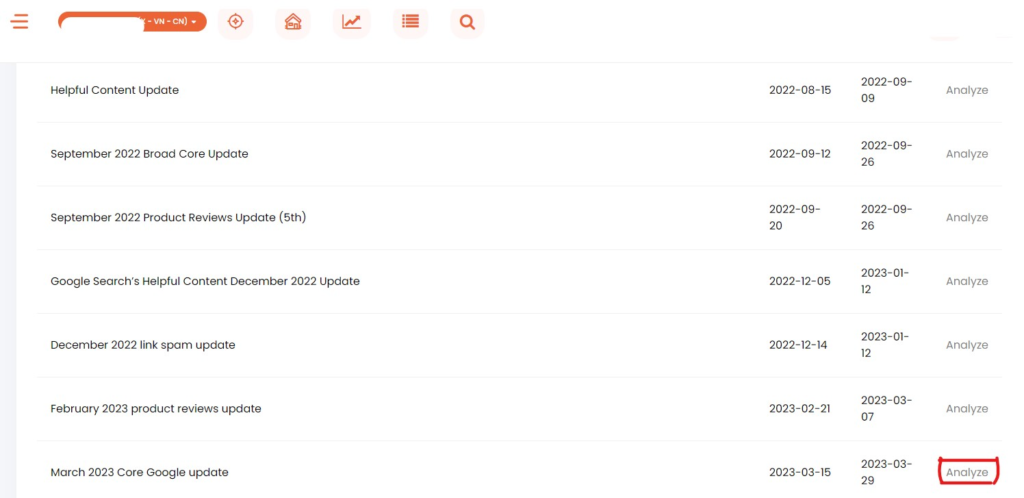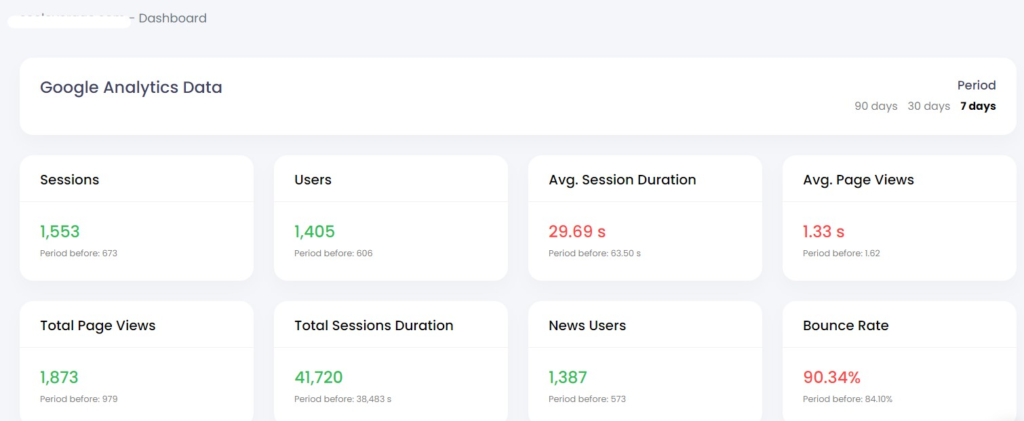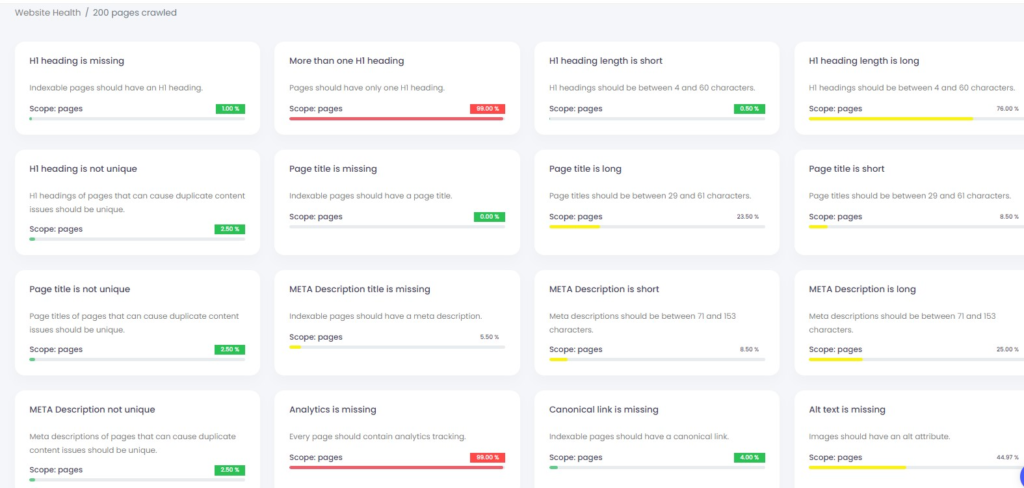Search engine optimization (SEO) has been a critical component in the digital marketing realm for decades. But as the online landscape evolves and becomes more complex, so do the strategies and tactics for optimizing websites for search engines. One of the most recent developments in the SEO world is programmatic SEO.
Programmatic SEO is a digital marketing approach that utilizes automation and technology to create and publish landing pages on a large scale. It is a method of producing plenty of content using a database to rank high in search engine result pages for similarly-structured, long-tail keywords.
The goal is to address the increasing search traffic by generating a high volume of pages that target specific search queries and keywords. This approach involves using software tools and scripts to automate the process of creating and optimizing landing pages. It includes keyword research, content creation, and on-page optimization.
The SEOLeverage™️ app and our team of experts can help you navigate this digital marketing approach to reap all its benefits.

Read on to discover more about:
Table of Contents
With the increasing complexity of search engine algorithms and the sheer number of online websites, conventional SEO tactics may no longer be enough in 2023.
The idea behind programmatic SEO is to quickly and efficiently create many landing pages. Instead of manually writing long-form content for each topic in a cluster, you can use it to automate your content writing and publishing process.
This method can be particularly useful for businesses with large product catalogs. It is also beneficial for websites that serve multiple geographic locations or target multiple languages. It is effective because it allows you to create high-quality web pages at a scale using a database and a template.
By leveraging automation and technology, businesses can scale their SEO efforts and achieve greater results with less manual effort.
Here are the top benefits of implementing programmatic SEO:
Programmatic SEO enables you to quickly and efficiently create pages and content at a large volume. This approach allows you to scale your SEO efforts without requiring a large amount of manual effort.
Programmatic SEO helps target specific keywords and search queries with highly relevant landing pages. This approach can increase the chances of attracting highly targeted traffic that is likely to convert.
By automating certain SEO tasks, programmatic SEO can help you save considerable time and resources. And this can result in a more cost-effective approach to digital marketing.
Programmatic SEO tools can help businesses identify technical issues and optimize on-page elements. Doing so can result in improved website performance and user experience.
By leveraging automation and technology, you will gain a competitive advantage. You can quickly respond to changes in search engine algorithms and stay ahead of the competition.
Programmatic SEO tools can provide businesses with valuable data and insights into keyword performance, user behavior, and other important metrics. Use this data to refine your SEO strategies over time.
SEOLeverage™️’s Deep Insights feature provides answers to some of the most common questions, including which URLs get the most conversion and which keywords drive the most traffic.

Programmatic SEO relies on the following key elements to be effective:
This involves collecting and analyzing data from various sources to gain insights about:
The data gathered is used to inform decisions and make real-time adjustments to SEO strategies.
These technologies allow for more accurate and efficient analysis of data. They can also identify patterns and trends that aren't immediately apparent to human analysts. This, in turn, allows for more effective optimization and greater scalability.
This involves using data to optimize website content in real-time based on user behavior and search engine algorithms. It allows for more personalized and relevant content. It also improves user engagement and drives more website traffic.
By constantly monitoring SEO performance and making required adjustments, you can quickly adapt to changes in search engine algorithms.
The SEOLeverage™️ app features an impact checker, allowing you to analyze the impact of the recent algorithm changes to your pages.

Programmatic SEO can enhance your content production through production efficiency and data depth. Here are the four steps involved in this SEO approach:
Programmatic SEO focuses on groups of keywords belonging to the same category or entity. To help identify your keywords, you must:
Your content template plays a crucial role. To ensure that you have a great page template, it must:
You can use any source of information to create content for your database. It can be any of the following:
Build a database that meets the goals of your programmatic SEO project.
You do not have to be a data scientist to find the right data. What is essential is being in touch with your audience's needs and having some basic skills in tools like Excel.
The key is to build a database that transforms your product or brand into a uniquely valuable resource.
To drive traffic to your programmatically generated pages, your first challenge is indexing your content. Since everything is done at scale, it is normal for your indexing to be less than 30%, even if you follow programmatic SEO best practices.
Google might not display pages in search results that it thinks are very similar to another page.
Add unique content to your pages, such as an introductory paragraph written by a human writer. Also, you must include user-generated content like reviews and a comment section.
Google has limited resources. Thus, it cannot index all the web pages immediately, primarily if you have published thousands of pages quickly.
Having a site architecture containing internal links and building quality external links will help your website get indexed much faster.
Google discourages having thin content or automatically generated content with keywords that doesn’t help users despite high search volume. It gives penalties to domains with pages that do not add significant value to users.
Avoid this issue by adding features like useful graphs and charts, user-friendly design, and valuable content.
To further ensure that your programmatic SEO efforts are effective, implement the following tips:
Get a clear understanding of your website's performance. You can use analytics tools like Google Analytics to analyze key metrics such as traffic, bounce rate, and conversion rates. These tools can also help you identify any issues hurting your SEO efforts.

Link building is often a time-consuming and manual process. Automate this process by analyzing your website's existing linking structure and identifying opportunities for new links.
For instance, build an effective internal link structure. Allocate enough time to contextual linking. Work also with SEOLeverage™️ professionals to set the right logic for your individual pages.
Also, automate outreach to potential link partners. This reduces the workload on your end.
Remember, not adding internal links will only result in orphaned pages and dead ends on your website. These new landing pages may only be seen as non-influential and might never be crawled.
When possible, consider creating a sitemap for every individual directory. Doing so will categorize the sitemaps by subject instead of when it’s published. As a result, Google will index every category easily.
Once you have created it, force crawl every sitemap until Google returns to the page several times.
Programmatic SEO is a real-time process that allows for continuous optimization and improvement. Thus, you must regularly monitor your website's health.
The SEOLeverage™️ allows you to do so:

Look into its rankings, traffic, and engagement metrics to ensure your SEO strategy delivers the desired results. Use this data to adjust your strategies and content to improve your SEO performance further.
There are plenty of emerging trends and innovations on the horizon.
One such trend is the use of natural language processing (NLP) and voice search optimization. As more users turn to voice assistants like Alexa and Siri, you must optimize your content for natural language queries to remain competitive.
Another emerging trend is using artificial intelligence (AI) and machine learning. They can create landing pages and further automate and optimize SEO processes. For example, use AI to automatically generate meta descriptions and title tags.
Programmatic SEO also has the potential for further integration with other marketing technologies, such as email marketing and social media advertising. By using a unified data management platform, you can better understand your customers. That way, you can provide more personalized and relevant experiences across all channels.
The future of programmatic SEO looks bright. But take note that it should not be used as a substitute for a comprehensive SEO strategy.
Automation can be helpful in generating many pages quickly. But it's still important to ensure that these programmatic pages have authoritative and quality content, providing value to users. This requires ongoing monitoring and optimization, as well as a focus on user experience and engagement.



